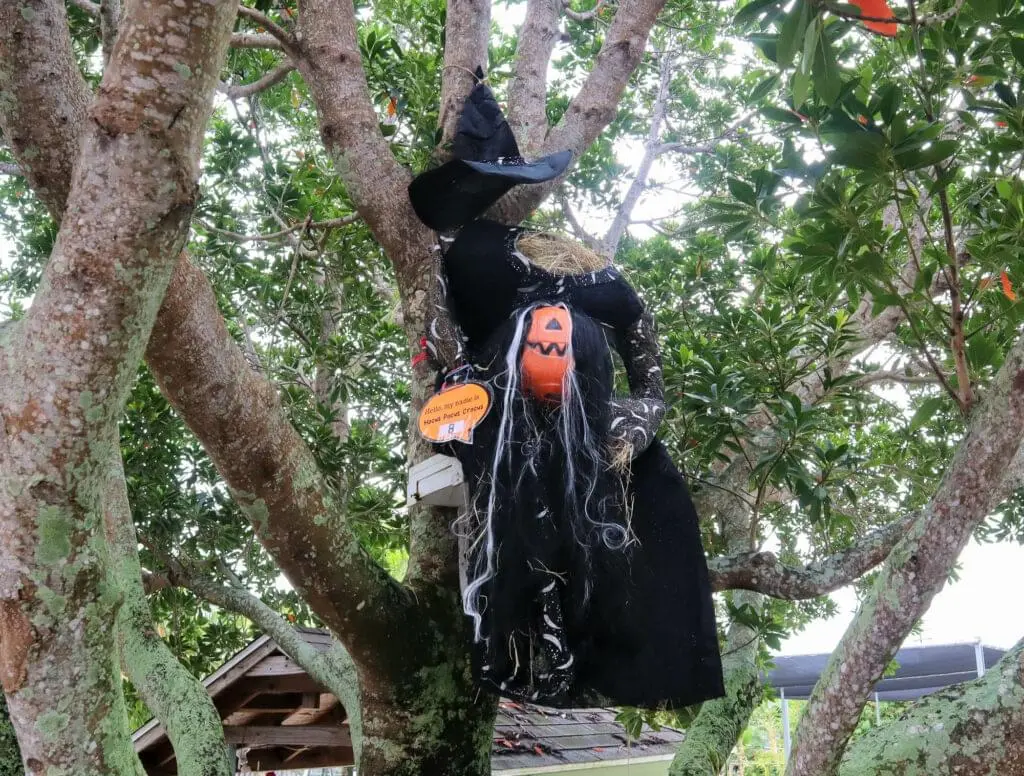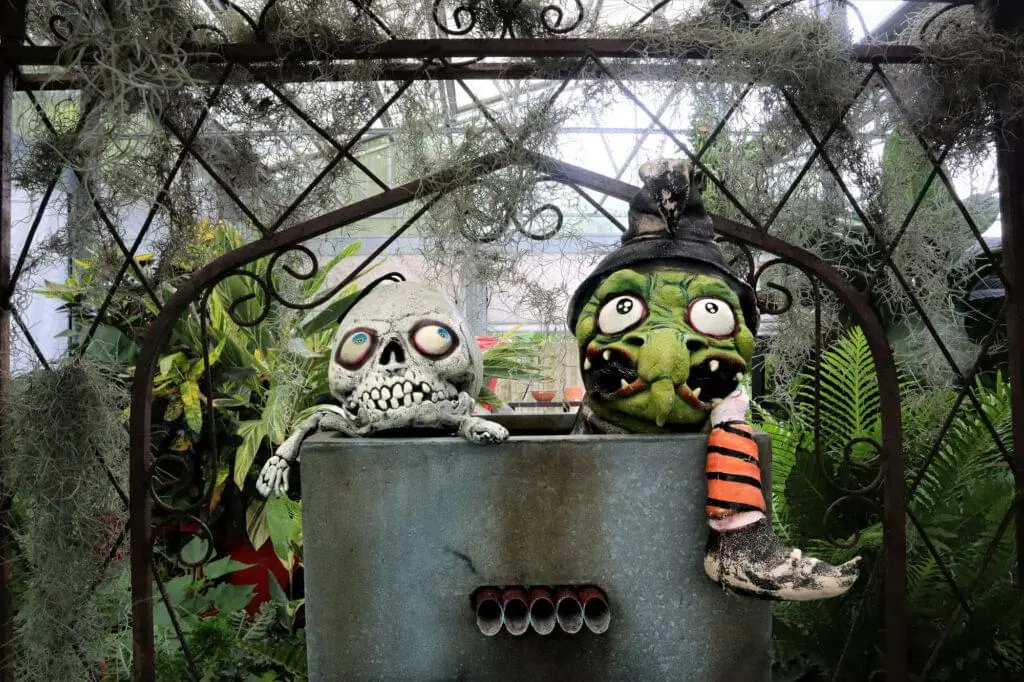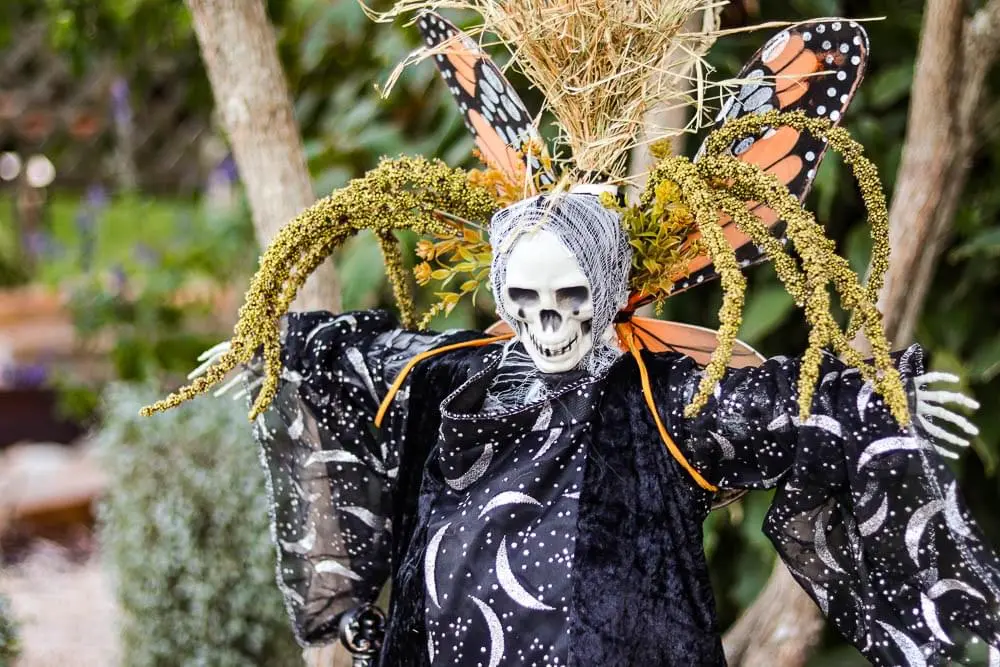by Amanda Rose Newton
In our month-long celebration of everything spooky, witches are perhaps highest on the pedestal. Complete with cauldrons, poisons, and a great wardrobe with hats, it’s easy to see why “witch” is a default costume at every store.

Simmering in legends of mysticism and the supernatural, many of the foods and medicines popularized in witchcraft are very real and many of you might already have them in your garden or medicine cabinet today!
Below we take a stroll through the garden of evil delights, focusing on some of the deadly, scary, and surprisingly tame plants of witches’ brews.
Double, Double Toil and Trouble
Fire burn and cauldron bubble! The famous witches of Macbeth had us all curious as to what was going on in that cauldron. It turns out it probably featured several ultra-common plants of today.

Flying Ointments
Popularized in Shakespeare’s time, these magical salves were reported to help witches take to the skies. Many of these were straight-up poisons if consumed in large amounts, but many featuring hyoscines caused delirium and hallucinations, which is its own form of flight.
If hyoscine sounds familiar, it’s used in motion sickness medicine as low doses relieve nausea. The plant responsible? Datura stramonium, or Thorn Apple, is a common plant native to the United States. You might know it by its more familiar name, Devil’s Trumpet.
Nightshades
Aside from our Devil’s Trumpet flying ointment, nightshades played a huge role in witchy medicine.
Mandrake (Mandragora officinarum)– Popularized in Harry Potter, the mandrake doesn’t mess around! It causes serious hallucinations and was once used in magic rituals.
Henbane (Hyoscyamus niger)- Used in brews, it also created a psychoactive response used to go into trance.
Deadly Nightshade (Atropa belladonna)- The name should be a clear indication not to engage with this plant. If you do, your end is probably not far off.
Witches used it to enlarge their pupils, which was the look in the 1500s. It has a past life as an anesthetic (with several oopsie moments where too much was applied), an arrow poison, and medicine for just about every ailment. Despite its checkered past, it’s a beautiful plant!
Monkshood (Acontium napellus) is a rare purple-blue color, making it stand out in the flower bed. It also happens to be one of the deadliest plants out there.
Witches believed it could make them invisible if they wrapped the seeds in lizard skin. It was also used as a surefire way to avoid conflict with vampires and werewolves. Rumor has it that the Nazis even used it within their bullets. It’s hard to outcompete the Monkshood!
Moonflower (Dautra sp.) This glowing white flower is yet another on the long list of hallucinogens that help increase psychic visions and communicate with spirits. Breathe in its scent and enjoy, just remember not to touch it unless you are looking to spend Hallows eve in the Hospital.

Herbs for Healing
Not all the plants favored by witches were devious in nature, with many serving as the basis for medicines used today.
Foxglove (Digitalis purpurea) Through studying this poisonous beauty, we found our currently used heart failure drugs, digoxin, and digitoxin.
Willow Bark has been used for years to soothe inflammation. Turns out it contains salicin, which in modern times is used in aspirin in the form of salicylic acid.
Garlic (Allium sp.) was used for just about everything and, frankly, still is. Earlier this year, new studies came out showing that garlic has the potential to be marketed as a blood clotting inhibitor.
Turmeric and Ginger root had been witch favorites to grind up and drink as a hot tea. While maybe not still serving the original purpose, both turmeric and ginger are touted for their inflammation, pain, and nausea reduction the natural way.
While witches are designated to a Medieval fantasy world, many of these early concoctions turned out to be beneficial and even lifesaving contributions to modern medicine.
Hats off to all you witchy ladies out there and keep on brewin’!


